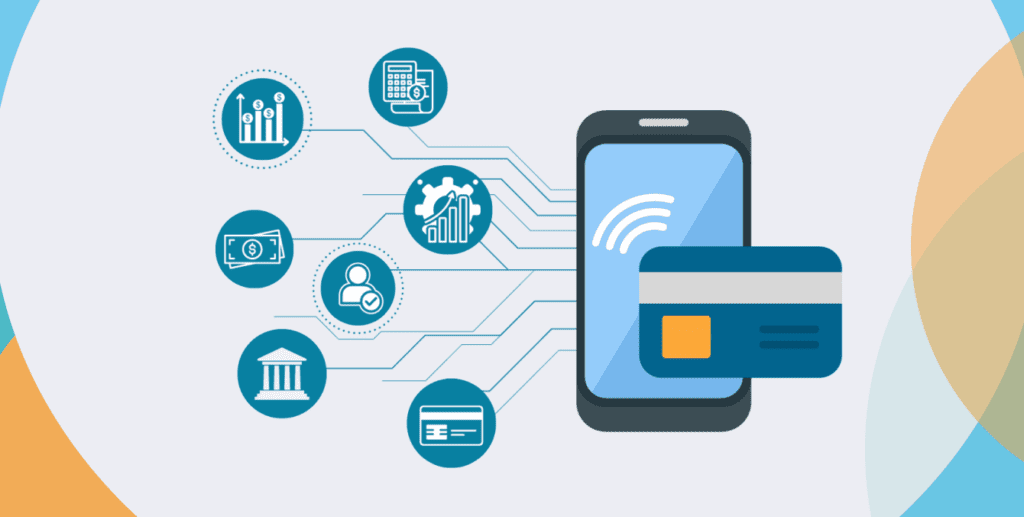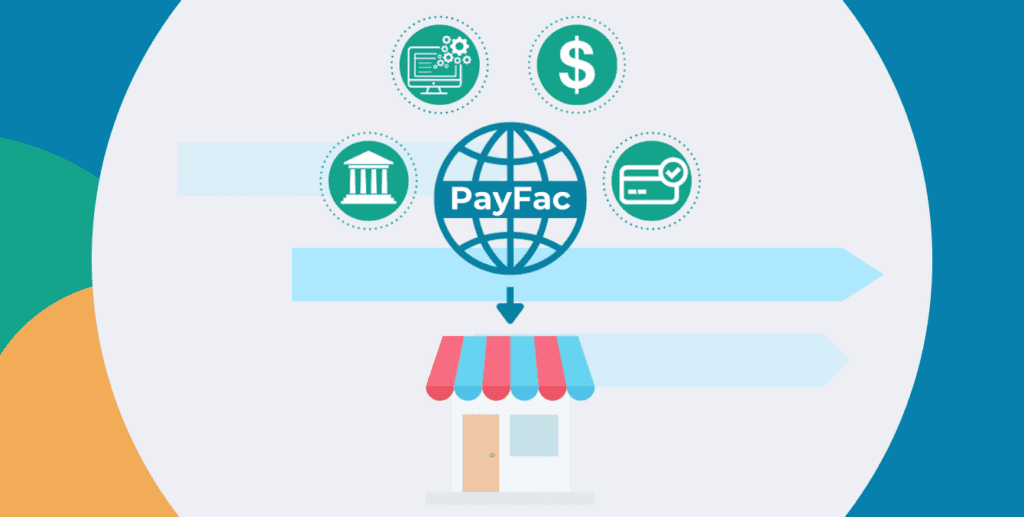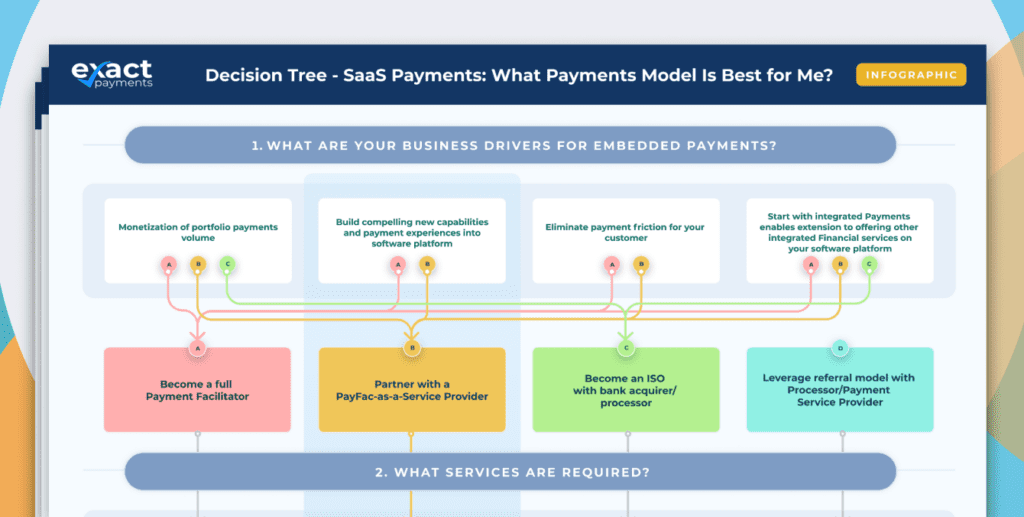How Payment Facilitation Works: An Overview for SaaS Providers

The world of payment processing has evolved rapidly since the early days of credit card payments. With the explosion of cloud-based software, e-commerce, and mobile payments, a significant portion of transactions now take place online. These emerging payment tech trends have paved the way for payment facilitation, an innovative merchant services model that’s increasingly leveraged by software-as-as-service (SaaS) companies.
As software companies take the reins in the merchant services landscape, it’s crucial for today’s SaaS providers to learn how payment facilitation platforms work. Understanding the underlying architecture of this merchant services model is necessary for software companies that want to leverage the PayFac model for their success. In this article, we’ll delve into the basics of the payment processing industry, explore the key players, and give a behind-the-scenes look at the inner workings of the payment facilitator model.
Payment Processing Explained
Because PayFacs operate in the broader payment processing landscape, it’s helpful to first take a look at the industry as a whole.
So, what is payment processing?
Payment processing refers to the digital transfer of funds between a merchant‘s bank account and a customer’s bank account. There are several entities and technologies that interact in order to facilitate the transaction process, including:
Payment processors
Payment processors are service providers that operate as intermediaries between the customer’s bank and the merchant’s bank. Payment processors are necessary for facilitating transactions both online and in person.
Acquiring banks
Acquiring banks, also known as acquirers, are banks that process payments on behalf of merchants.
Issuing banks
Issuing banks, or issuers, are entities that issue customer credit cards and handle the transfer of funds to the merchant’s account.
Credit card networks
Also known as credit card associations, credit card networks manage the technological infrastructure and regulations of credit card processing. The four main credit card networks are Visa, Mastercard, American Express, and Discover.
Merchant services providers
Merchant services providers (MSPs) equip merchants with all the tools they need to start processing card payments. There are several types of MSPs, including independent sales organizations (ISOs) and payment facilitators.
Independent sales organizations
ISOs are a type of merchant services provider. They essentially operate as intermediaries between acquiring banks and merchants, onboarding merchants with processing accounts and providing additional core processing services and technology.
Payment gateways
Payment gateways are software applications that support the online transaction process. They function like digital card readers that securely transmit customer payment information to the payment processor — and ultimately to the merchant so they can get funded.
Emerging Payment Tech Trends: The Rise of the PayFac Model
As payment processing rapidly moved online with the explosion of e-commerce in the early 2000s, merchants were forced to diversify their tech stack and service provider arrangements. A growing number of businesses began to use payment gateways and online software solutions (like e-commerce platforms) in tandem with their merchant processing accounts.
It was within this climate of increasingly fragmented payment processing services that PayFacs arrived on the scene—streamlining the various layers of payment processing by operating as a single point of contact for all payment needs.
How Payment Facilitation Works
Payment facilitation modernizes the conventional merchant services model by harnessing payment aggregation and a software-focused approach.
Differentiator 1: Payment Aggregation
The most crucial distinguishing factor of PayFacs is that they operate as merchants themselves and register for processing accounts directly with an acquiring bank. They are then able to onboard and aggregate sub-merchant accounts under their master account.
This aggregation approach allows for a much simpler and faster account signup process for merchants—one that often takes mere minutes. In contrast, merchants who sign up for processing accounts through their ISO can typically expect to wait several days or even weeks for their account to go live.
Differentiator 2: Software-Led Payments
Another differentiator is that PayFacs typically utilize the software-as-a-service model to provide access to payments on a subscription basis. This operating model is not only profitable for the software company, but it also improves the merchant experience by merging the provision of end-to-end payment processing tools with the actual processing account.
It’s for this reason that most PayFacs are software companies that offer payment processing as an integrated feature within their proprietary software. From online shopping carts, to accounting software, to POS systems, a wide range of software verticals have successfully pursued payment monetization through the PayFac model. You can learn more about some key characteristics and examples of payment facilitator software companies in our article, The PayFac Profile: Examples of Successful Payment Facilitator Companies.
The PayFac’s Role in the Payments Ecosystem
PayFacs have emerged as a unifying entity in the fragmented payment processing industry. By interacting closely with acquiring banks, payment processors, card networks, and financial technology (fintech) companies, PayFacs are able to provide a full suite of processing services all under one umbrella.

Let’s take a closer look at the nature of these various PayFac partnerships:
Sponsoring bank partnerships
PayFacs register for their master merchant account with an acquiring bank. This bank is known as the sponsoring bank.
Payment processor partnerships
PayFacs partner with payment processors, like Fiserv and Elavon, to facilitate transaction processing. Processors handle authorization, settlement, and other transaction-related services.
Card network partnerships
The credit card networks are responsible for setting interchange fees and various industry regulations. PayFacs work closely with these networks to comply with their standards and policies.
Fintech and software company partnerships
PayFacs typically partner with other software and tech companies as they build out their tech stack. This can include payment gateways, fraud prevention solutions, and risk management and identity verification screening tools.
A PayFac’s Responsibilities
Becoming a payment facilitator is a big job as many payment facilitators assume many more responsibilities than ISOs as they provide a broader spectrum of payment processing services directly to the merchant.
While ISOs typically outsource the bulk of risk management, compliance, and software development to their payment processing or bank partners, PayFacs handle these all in-house (or, as we will discuss later, they can partner with a PayFac-as-a-Service provider that oversees these duties for them).
A PayFac’s main responsibilities include:
- Technology development: PayFacs need to develop and maintain their payment processing technology stack. This includes end-user payment features, a merchant platform, and back-end software for managing underwriting and risk monitoring.
- Underwriting and onboarding: Since PayFacs aggregate all sub-merchants under their account, they are responsible for overseeing the full onboarding process and vetting accounts for potential risk. They must establish thorough risk management and underwriting policies that comply with regulatory requirements, such as anti-money laundering (AML) and Know Your Customer (KYC) rules.
- Transaction monitoring: In addition to screening new merchant accounts for risk, PayFacs must regularly monitor all transactions for indications of fraud. PayFacs are also responsible for performing ongoing chargeback monitoring.
- Funding: All funds are routed from the payment processor to the PayFac, which means that the PayFac is responsible for disbursing funds to its sub-merchant accounts. This funding process typically occurs on a regular schedule, such as daily or weekly, depending on the agreement between the PayFac and its sub-merchants.
The Payment Facilitation Tech Stack
Managing such an expensive array of responsibilities requires a complex groundwork of software APIs and user interfaces. This software architecture is made up of various domains — or modules — that each perform specific functions.
Within these modules are various integrations with third-party entities, like the sponsoring bank and payment processors, in order to transmit data and receive external notifications.
Below are several key modules of the PayFac tech stack:
- Merchant onboarding: This software domain includes all the tools necessary for gathering new sub-merchant information, vetting for risk, and registering approved accounts.
- Transaction processing: PayFacs route all transaction information to the payment processor, which then facilitates the transaction process. During this process, payment details are passed along to several entities in a series of steps.
- Data vault and tokenization: PayFacs handle a tremendous amount of sensitive information, which means they need to utilize a secure module for tokenizing and storing data safely.
- Reporting and analytics: Payment facilitators need to be able to monitor various forms of data — such as transactions, fraud alerts, and merchant processing patterns. They also need to share some of this data with their various partners to remain compliant, and they must provide sub-merchants with transaction reporting capabilities.
- Funding: This module is dedicated to reviewing and settling transaction batches and creating set schedules for merchant payouts.
How to Become a Payment Facilitator: Leverage the PayFac Model With Exact Payments
The PayFac model brings SaaS companies the incredible benefits of payment monetization along with merchant-friendly payment features that increase client satisfaction. If you’re considering adopting the PayFac model, know that the right technology partner can help you bypass many of the complexities of payment facilitation — such as having to build a full tech stack and manage risk and compliance.
With the help of a payment facilitation services provider like Exact Payments, you’ll be able to tap into pre-built APIs and outsource risk management, funding, and other core processes. To learn more about whether to take the build or buy path to payment facilitation, read our Build vs. Buy whitepaper. Or, contact a member of our team for a consultation!



